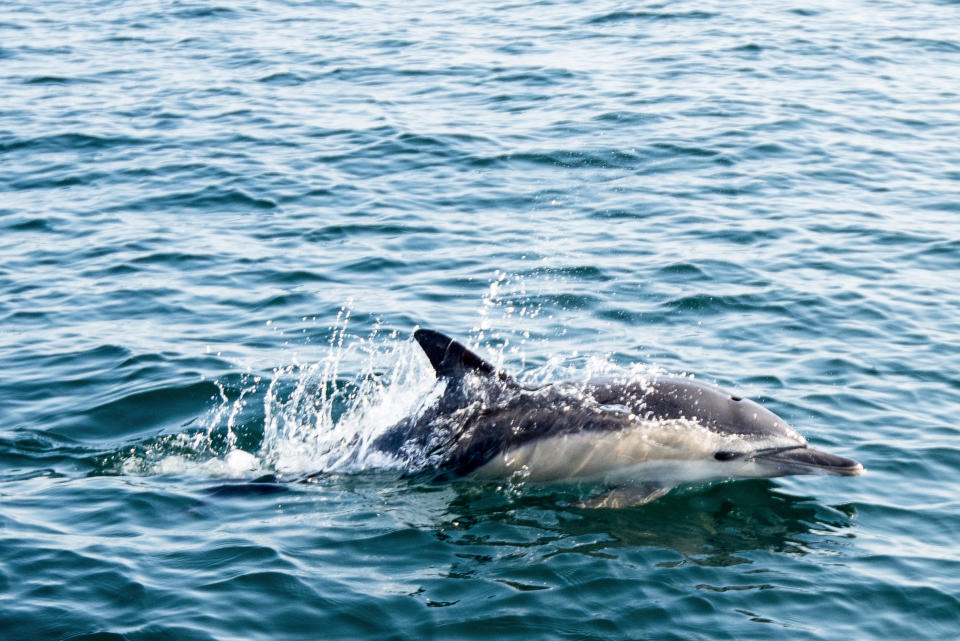From dolphins to reindeer, here are the animals most at risk of contracting coronavirus

While questions remain as to how exactly the SARS-CoV-2 virus was transferred to humans, the scientific community seems to agree that the virus originated in bats. Now with over 23 million human COVID-19 infections reported worldwide, and only minor reports of animals carrying the virus, it seems safe to say that they are not a major vector of the virus.
Still, in the midst of a lingering global pandemic, analyzing how exactly SARS-CoV-2 could continue to persist through various animal species is certainly warranted. In a new study published Tuesday in the journal PNAS, that’s exactly what researchers from the University of California, Davis, did. Using DNA sequencing, the team studied hundreds of animal species to identify which ones may be susceptible to becoming “intermediate host species” for the virus that causes COVID-19.
The study specifically analyzed the ACE2 protein, a receptor that has been shown to serve as an infection pathway for SARS-CoV-2, meaning it provides the “entry point for coronavirus” into the cells. Joana Damas, a postdoctoral researcher at the UC Davis Genome Center and lead author of the study, explained to Yahoo Life in an email that researchers determined the likelihood of SARS-CoV-2 infecting the species by comparing “the number of differences between the species’ ACE2 protein ... and the human ACE2.”
In total, the team looked at the ACE2 of 410 vertebrates, including 252 mammals, 65 fish, 17 reptiles, 4 amphibians and 72 birds. Based on the similarities, 18 species, including bonobos, chimpanzees, Western lowland gorillas and Rhesus macaques, were considered to have a very high risk of SARS-CoV-2 infection. Another 28 species, including beluga whales, reindeer, white-tailed deer and Pacific white-sided dolphins were classified as high risk. Fifty-seven species, including cats, cattle, goats and sheep, were deemed medium risk, and over 40 species, including dogs, pigs and horses, were considered low risk.
Damas says the researchers weren’t necessarily surprised to see a number of primates in the very high risk and high risk categories, but what was surprising was “find[ing] some other species in the high category, for instance, deer, whales and dolphins.” She notes that one of the most troubling aspects of the research was how many wild animals considered to be vulnerable populations made the list.
“Forty percent of the species in the predicted very high, high and medium categories are ‘threatened’ on the International Union of Conservation of Nature Red List of Threatened Species,” Damas tells Yahoo Life. “The identification of susceptibility on these animals is very important so that measures can be taken to minimize the risk of spillover to these already vulnerable populations, either in the wild or under human care.”
Damas is quick to note that the ranking is not intended to imply these animals will get COVID-19, but instead may help scientists make decisions. “Our study identified a large number of mammals that can potentially be infected by SARS-CoV-2 through their ACE2 proteins. These are, however, predictions based solely on [computer] analysis and need to be confirmed by direct experimental data,” Damas writes. “Nonetheless, our results can assist the identification of species that may serve as a reservoir or intermediate host(s) for SARS-CoV-2 and hence reduce the opportunity of a future outbreak of COVID-19, and also facilitate the selection of model organisms for SARS-CoV-2 research.”
Erin Katribe, a veterinary doctor and medical director of Best Friends Animal Society, similarly urges caution when interpreting the results. “One goal of this study was to determine potential intermediate hosts that might present a spillover risk, but this is based solely on an infection pathway identified in humans,” Katribe tells Yahoo Life. “We should not read too much into this study, as further experimental research is needed to determine what species can become infected and are at risk.”
Katribe also notes that the potential for an animal to get the virus doesn’t necessarily mean that it would be capable of spreading it. “Just because it’s possible for a species to get infected, it does not mean that they will become infected at a high incidence, as we’ve seen play out in pet cats and dogs that have been exposed by their owners,” Katribe says. “The number of cats and dogs infected naturally is exceedingly low when compared to the enormous number of human cases globally. “
For the latest coronavirus news and updates, follow along at https://news.yahoo.com/coronavirus. According to experts, people over 60 and those who are immunocompromised continue to be the most at risk. If you have questions, please reference the CDC’s and WHO’s resource guides.
How to maintain your physical and mental health during the pandemic
Taking care of a loved one with COVID-19? Here’s how to stay healthy
Q&A with Dr. Kavita Patel: How to keep your family safe and maintain your mental health
Read more from Yahoo Life
Want daily lifestyle and wellness news delivered to your inbox? Sign up here for Yahoo Life’s newsletter.

 Yahoo Sports
Yahoo Sports 
